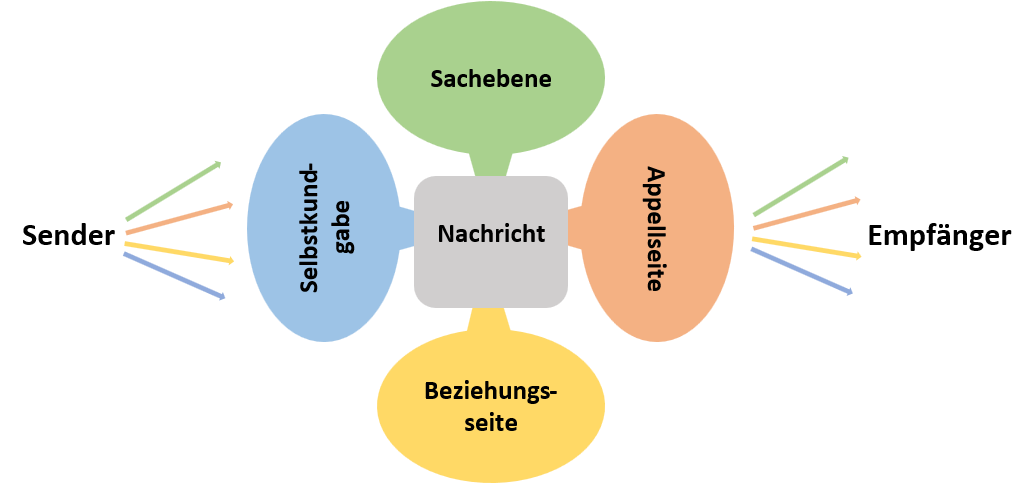Four Sides of a Message
This model clearly explains why people often miscommunicate.
Four Sides of a Message
Four Sides of a Message
The 4 Sides of a Message model by Friedemann Schulz von Thun is a key part of communication psychology. It shows that people can send and receive messages on four different levels.
Communicating on just one level is nearly impossible. Additionally, each person, depending on their type, personality, experiences, and values, tends to receive and send messages more often on certain levels. The emphasis also significantly affects how messages are received. This makes communication between people sometimes difficult and leads to misunderstandings.
The better you can assess someone, the more you can adjust your communication to match theirs. This leads to more harmony and understanding in communication.

Guiding Principles
Messages can be received on different levels. On each level, various interpretations are usually possible. This is how communication problems arise.
Example:
Sender: "Your hair is so curly today!"
The receiver hears: "You don't look good (today)!"
These communication problems are clearly described by the following three guiding principles.
- Said is not yet meant!
- Heard is not yet understood!
- Understood does not mean agreed!
The Four Sides
The model is divided into the following 4 sides:
Factual Level
On the factual level, factual information, numbers, data, and facts are sent and received. If communication only took place on this level, it would tend to be boring and monotonous.
The woman says to her husband: "There is a spider on the wall."
The man receives on the factual level: "There is a spider on the wall."
Appeal
On the appeal level, requests or commands for action or inaction are sent or perceived.
The woman says to her husband: "There is a spider on the wall."
The man receives on the appeal level: "Look at the spider on the wall!"
Relationship Level
Characteristic of the relationship level are you- and we-messages. The messages contain information about how the sender relates to the receiver (We) and what they think of them (You).
The woman says to her husband: "There is a spider on the wall."
The man receives on the relationship level: "You never notice things like this!"
Self-Revelation
Characteristic of the self-revelation level are I-messages. The sender consciously or unconsciously reveals information about their self-image, motives, values, emotions, etc.
The woman says to her husband: "There is a spider on the wall."
The man receives on the self-revelation level: "I find this spider very fascinating"
However, the woman meant something else....
The woman says to her husband: "There is a spider on the wall."

